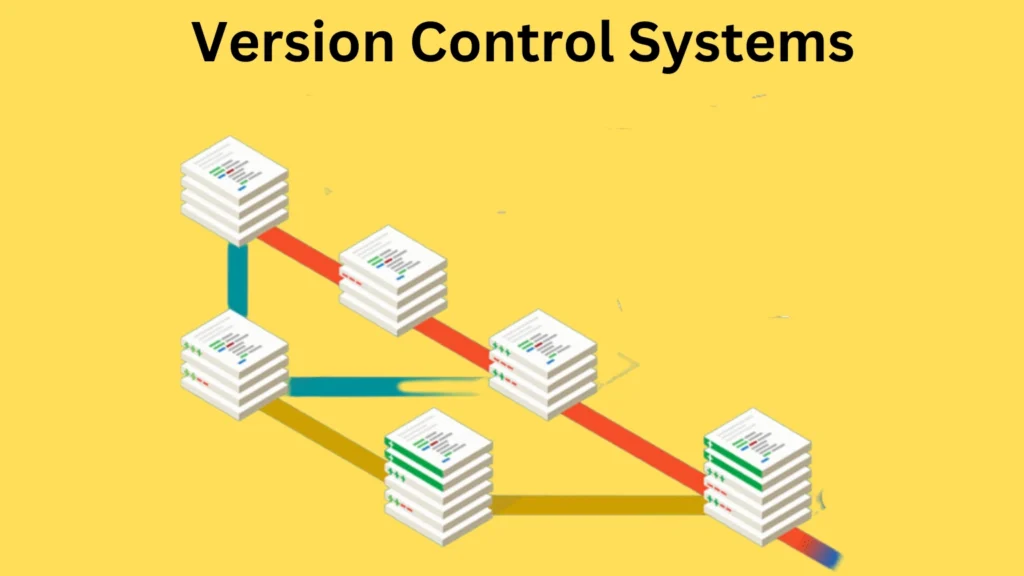Version Control Systems: An Overview of Centralized and Distributed Approaches

Software development has become an integral part of our daily lives. From mobile applications to web-based software, developers are constantly working on new projects to meet the ever-increasing demand for technology. However, with the increasing complexity of software development, it has become essential to use version control systems to manage source code versions. Version Control Systems Version Control Systems (VCSs) are essential tools for software engineers who produce source code, change and extend it, undo changes, and jump back to older versions. When several software engineers want to access the same file, concurrency becomes an issue. VCSs enable the acceleration and simplification of the software development process, and enable new workflows. They keep track of files and their history and have a model for concurrent access. Software Engineering vs Data Science Centralized Model The centralized model is the traditional approach to VCSs. It uses a centralized Version Control System (CVCS) to manage files and their history. In this model, all files are stored in a central repository, and software engineers check out files from the repository to work on them. When they are done, they check them back in, and the changes are merged with the repository. This approach has several advantages, including: However, the centralized model also has some disadvantages, including: Distributed Model The distributed model is a newer approach to VCSs. It uses a distributed Version Control System (DVCS) to manage files and their history. In this model, each software engineer has a complete copy of the repository on their local machine. They can work on files independently, and changes are merged when they are ready. This approach has several advantages, including: However, the distributed model also has some disadvantages, including: Concurrent Versions System (CVS) Concurrent Versions System (CVS) is a popular CVCS that has been used for many years. It uses a client-server architecture, with a central repository and multiple clients. CVS has several advantages, including: However, CVS also has some disadvantages, including: Subversion (SVN) Subversion (SVN) is a popular CVCS that has replaced CVS in many organizations. It uses a client-server architecture, with a central repository and multiple clients. SVN has several advantages, including: However, SVN also has some disadvantages, including: Cybersecurity vs Software Engineering: Choosing the Right Career Path Git Git is a popular DVCS that has gained widespread adoption in recent years. It uses a distributed architecture, with each software engineer having a complete copy of the repository on their local machine. Git has several advantages, including: However, Git also has some disadvantages, including: Conclusion In conclusion, Version Control Systems (VCSs) are essential tools for software engineers who produce source code, change and extend it, undo changes, and jump back to older versions. There are two different approaches to VCSs: the centralized model with the centralized Version Control Systems (CVCSs) and the distributed model with the distributed Version Control Systems (DVCSs). Each approach has its advantages and disadvantages, and the choice of VCS depends on the specific needs of the project. Concurrent Versions System (CVS), Subversion (SVN), and Git are popular VCSs that have been used in many organizations. By choosing the right VCS, software engineers can accelerate and simplify the software development process, and enable new workflows. FAQs References
Application Monitoring Best Practices: A Comprehensive Guide

Application monitoring is a critical aspect of ensuring the optimal performance and security of software systems. Effective monitoring helps to identify and resolve issues before they escalate into major problems that can impact user experience, business operations, and reputation. However, monitoring can be a complex and challenging process, especially in the context of environmental security. Application monitoring It is the process of monitoring the performance and availability of applications in a data center. It involves collecting data on various metrics, such as response time, CPU usage, memory usage, and network traffic, and analyzing this data to identify any issues or anomalies. Effective application monitoring requires a combination of tools, processes, and best practices. Best Practices For Machine Learning Applications: A Comprehensive Guide Application Monitoring Best Practices Understand Your Applications The first step in effective application monitoring is to understand your applications. This includes understanding their architecture, dependencies, and performance requirements. By understanding your applications, you can identify the key metrics to monitor and set appropriate thresholds for alerts. Use the Right Tools There are many tools available for application monitoring, ranging from simple scripts to complex monitoring platforms. It is important to choose the right tools for your organization’s needs. Some key factors to consider when selecting tools include ease of use, scalability, and integration with other systems. Monitor Key Metrics Effective application monitoring requires monitoring key metrics that are relevant to your applications. These metrics may include response time, CPU usage, memory usage, network traffic, and error rates. By monitoring these metrics, you can identify performance issues and take corrective action before they impact your users. Set Appropriate Thresholds Setting appropriate thresholds for alerts is critical to effective application monitoring. Thresholds should be based on the performance requirements of your applications and should be set at a level that allows you to detect issues before they impact your users. It is important to regularly review and adjust thresholds as needed. Monitor Applications in a DMZ Monitoring applications in a DMZ can be challenging due to security restrictions. However, it is important to monitor these applications to ensure that they are running smoothly and to detect any security breaches. One approach to monitoring applications in a DMZ is to use an agentless monitoring solution. Use Containers for Application Monitoring Containers are a lightweight and flexible way to deploy and manage applications. They can also be used for application monitoring, providing a scalable and efficient way to collect and analyze performance data. Containers can be used to monitor both traditional and cloud-native applications. Computer Vision Applications in Manufacturing Display Data in a Clear and Actionable Way Displaying monitoring data in a clear and actionable way is critical to effective application monitoring. This includes using dashboards and reports that provide real-time visibility into the performance of your applications. Dashboards should be designed to highlight key metrics and provide alerts when thresholds are exceeded. Automate Monitoring Tasks Automating monitoring tasks can help reduce the workload on IT staff and ensure that monitoring is performed consistently and accurately. This includes automating tasks such as data collection, alerting, and reporting. Automation can also help ensure that monitoring is performed 24/7, even when IT staff are not available. Integrate Monitoring with Other Systems Integrating monitoring with other systems, such as incident management and change management, can help ensure that issues are detected and resolved quickly. This includes integrating monitoring with tools such as ServiceNow and Jira, as well as with ITIL processes such as incident management and problem management. Continuously Improve Monitoring Effective application monitoring requires continuous improvement. This includes regularly reviewing and updating monitoring processes, tools, and metrics. It also includes analyzing monitoring data to identify trends and areas for improvement. By continuously improving monitoring, organizations can ensure that their applications are running smoothly and efficiently. Conclusion Effective application monitoring is critical to modern data center management. By following these best practices, organizations can ensure that their applications are running smoothly and efficiently, and that any issues are detected and resolved quickly. From understanding your applications to continuously improving monitoring, these best practices provide a comprehensive guide to effective application monitoring. FAQs
